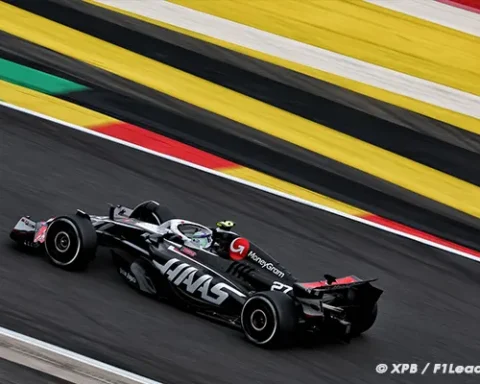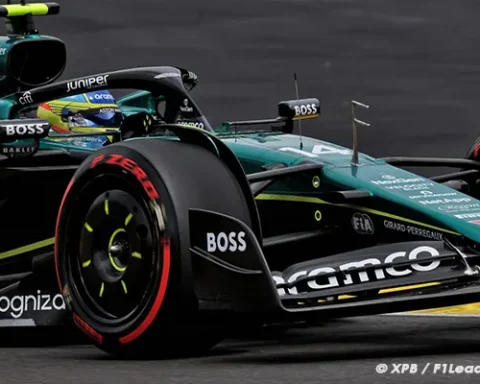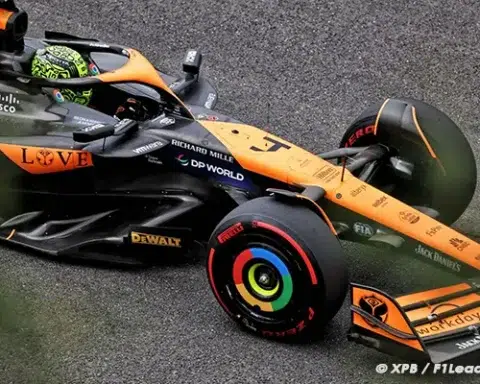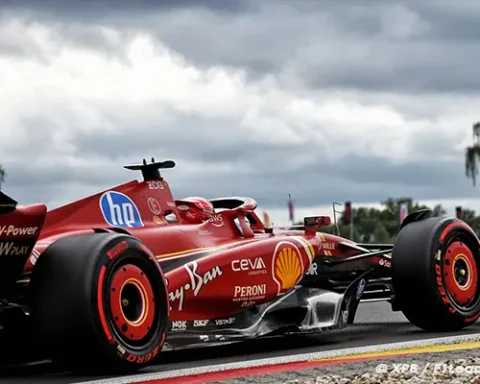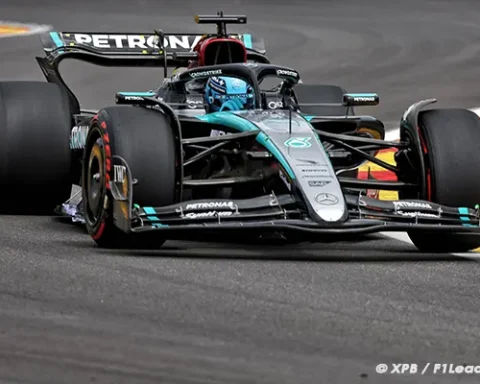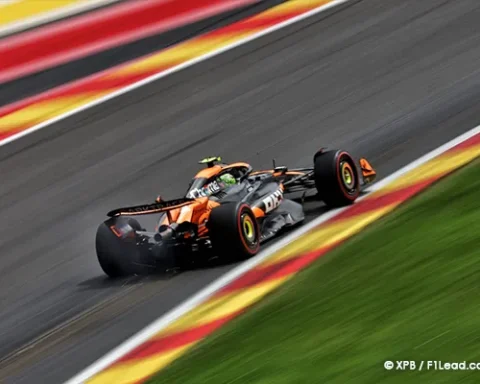F1 teams face a potential transformation as AI promises to redefine competition and data strategy. Is AI revolutionizing society, but is it also revolutionizing F1?
Clare Lansley, Chief Information Officer at Aston Martin F1, is at the forefront of this technological upheaval… but with some concrete implications in the sport?

For Lansley, the AI revolution will change how we handle the gigabytes of data a team collects each weekend. And given that data is a crucial element of performance, this could indeed be a game changer.
“Formula 1 is at the cutting edge of science and technology. In an ultra-competitive environment where exploiting the finest margins can lead to the greatest gains, it stands to reason that when a technological revolution looms, F1 teams are quick to embrace it.”
“This is what’s happening with AI. It’s going to change the world, and while it’s still in its infancy, a huge opportunity presents itself to those who, on the starting grid, understand and exploit it most effectively.”
“The sport is on the verge of a massive change with AI. Teams that actively adopt AI and are already using it can expect significant competitive gains on the track.”
“That’s why we are assessing the best way to deploy AI in our team, with the support of our partners at Cognizant.”
“Cognizant has really helped us by providing a data strategy to optimize the arrival of AI. With their help, we have been able to manage data more effectively and efficiently.”
“As an industry, and specifically as a team, we want to be guided by data, to be race-ready.”
“Everything we do on the car generates data—and we see AI as becoming a key performance differentiator in the sport; an element that will bring significant efficiency gains to the team on all sorts of fronts.”
“AI can facilitate decision-making by analyzing vast volumes of historical data, which can in turn be used to predict optimal car settings for a given track. It’s possible to compare simulation results to actual car data, and AI can proactively suggest improvements.”
“But what deserves emphasis is the speed at which all this can be undertaken: it’s truly impressive. By adopting this technology, we’ll be able to free up several engineers so they can focus more on the car’s performance.”
Lansley provides concrete examples of these advancements: for instance, when the direction of the wind changes, AI can immediately predict the evolution of track conditions, thereby aiding in setup adjustments…
“Integrating data into a ‘data lake’—a single, massive, unpartitioned storage center—is the starting point for the AI journey. Once there, we can apply the right analytical tools, and that’s where machine learning comes into play.”
“Machine learning is the ability to learn from large amounts of data to predict patterns: it has fantastic applications in race strategy—it can combine data on tires, weather information, track conditions, and use predictive and real-time analytics to chart optimal decision-making scenarios. So, if the wind direction has changed, what is the impact on aerodynamic performance? What can we change on the car to mitigate it? Or how does a change in track configuration affect fuel consumption?”
“So, it’s not just about studying historical information—which all teams archive—but also about analyzing huge quantities of live data on the fly to proactively highlight what we should be doing.”
“At this moment, we are actively evaluating AI technology to determine where it can best add value. We are actively developing our capabilities and the foundations are in place.”
“The data lake allows the team to consolidate all data in one place, so that all departments concerned with performance can both use and contribute to it.”
“I think everyone wants to jump on the AI train; everyone wants to prove their technology. In the end, it’s about massive algorithms and how you use them, but they are complex and operate at the speed of light, so it’s about using them responsibly and ensuring that all the data is accurate and reliable. It requires a lot of effort, brainpower, and setup. It’s a long-term mission.”
“For now, it’s really about understanding and maximizing the scale of this opportunity: soon, we will be able to ask our lead performance engineers which part of their workload they would most like to see automated. This is an incredibly interesting and attractive proposition, both in terms of workload management and performance optimization.”
No layoffs due to AI?
However, a question must be asked: Will AI be used to reduce payroll and lay off employees? No, according to the head of Aston Martin F1.
“No, it’s not about saying the machine will replace people. On the contrary, it will allow the machine to do the bulk of the work, thus allowing the experienced engineer to make an informed decision that could make the difference between first or second place.”
“You will still need people capable of acting on the basis of AI recommendations, and it will enable the already highly skilled members of our team to do more. For example, in the aerodynamics department, people are receiving cross-training in AI so they can use the tools to energize their work.”

AI revolution in F1. 2025 AI revolution in F1. Formula 1 AI revolution in F1
- ReadMore>Doornbos Doubts Leclerc’s World Champion Potential
- Following us on Facebook and Twitter

